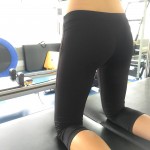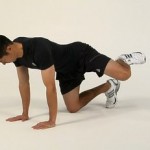
What can be causing an ongoing pain in our bottom?
- No apparent onset
- Is gradually getting worse
- Can or can’t put your finger on it?
We see people daily with pain in their glute and this can be for the same or different reasons. Don’t get too fixed on what you read on the internet as some of the diagnosis’ have very similar symptoms and there are only some very mild differences.
What could it be?
- Hamstring tendinopathy/ Ischiogluteal bursitis
- Piriformis syndrome
- Referred pain from lumbar spine or sacroiliac joint
- Myofascial pain: trigger points in gluteus medius and piriformis
- Stress fracture of Ischium, Pubic ramus or Sacrum
Hamstring tendinopathy/ Ischiogluteal bursitis
What is it? Most commonly is an overuse injury and is seen a lot in sprinters, or runners increasing the intensity of their programmes. It is an inflammation of the origin of the tendon that turns into your hamstring muscle. The pain can come on for no reason and can be quite sharp. Due to tendons not having as good a blood supply they can be resistant to treatment and can a while to get to full recovery.
Symptoms:
- Insidious onset of pain
- Feel stiff and sore after sitting/lying sleeping
- Can feel better when warm after a short bit of running, but then when pushes it too far again, pain can come back with vengeance!!
Treatment:
- Strengthening and stretching programme will be put in place by your physiotherapist
- Transverse friction, dry needling and deep tissue work will be carried out
- Ultrasound
Problems:
- If patient fails to respond to treatment and is getting no relief it may be due to inflammation of the ischiogluteal bursitis which causes the same pain and symptoms as a tendinopathy. A referral to a consultant can be made if this is suspected for a cortisone injection to calm the inflammation down.
Piriformis Syndrome
What is it? It can be divided into different parts; one when the piriformis puts pressure on the sciatic nerve and causes abnormal neurological symptoms down the back of thigh that can go into the calf (10% of the population have their sciatic nerve pass through the piriformis muscle, these are more vulnerable to this type). The other is when there is a chronic or acute spasm in the piriformis itself which will give a deep buttock pain and can be aggravated with climbing the stairs, sitting or squats. Passive internal rotation of the hip will be reduced if this is the case.
Symptoms:
- Pain deep in glute or referring down the back of the leg
- Increased activity will tighten the muscle and make the pain worse
- Sitting for periods of time can make the pain worse
- Stretching of the piriformis should ease the pain
Treatment:
- Soft tissue release, deep tssue work and dry needling to the piriformis
- Passive internal hip rotation
- Structured stretching and strengthening exercise programme
Problems:
The symptoms might not improve if the sciatic nerve actually passes through the piriformis as this is a structural problem that can’t be resolved by Physiotherapy. Referral to a specialist will need to be made for further intervention.
Referred pain from Lumbar Spine or Sacroiliac joint
What is it? Most commonly if pain is being referred from your lower back it will be due to the intervertebral disc or facet joint. Abnormalities in the sacroiliac joint are one sided and there will either be hypo or hypermobility on the joint and an asymmetry between the ASIS, PSIS or iliac crest. There are all things that your physiotherapist will look and test for.
Symptoms
- Diffused ache in buttock and varies in intensity of pain
- More than likely to have a positive slump (a test carried out by physiotherapist)
- Local tenderness to lumbar spine
- Tenderness of glutes and lower back muscles on palpation
- With SIJ involvement patient can describe groin and anterior thigh pain along with the buttock pain.
Treatment
- Joint mobilisation to lumbar spine or sacroiliac joint as appropriate
- Deep tissue massage and release, acupuncture/dry needling
- Exercise programme, varies between individual
Problem
Severe prolapsed disc. Doesn’t tend to be an insidious onset, more than likely to know that it has happened with a movement or activity. If any severe neurological disruption Physiotherapist will urgently refer on as appropriate.
Myofascial Pain
What is it? Trigger points in gluteus medius and piriformis. Most commonly due to an underlying problem from Lunbar spinae of lumbopelvic instability (see above).
Stress Fracture
What is it? Forces from surrounding muscles in the abdomen, hip and lower back that all attach onto he pelvis are excessive or too repetitive, and beyond what the bone can withstand, bony damage can gradually occur. This may initially result in a bony stress reaction, however, with continued damage may progress to a pelvic stress fracture.
The pubic ramus and ischium are two of the more commonly affected regions in a pelvic stress fracture. A pelvic stress fracture most commonly occurs over time with excessive weight bearing activity such as running, sprinting, jumping or dancing. A change in the intensity, surface or footwear can all be contributing factors.
Symptoms:
- Localised pain in the pelvic region that increases with impact activity depending on where the stress fracture is
- Walking or standing can aggravate symptoms ion severe cases
- Limp
- Reduced pain on rest
- Aching at night
- Can have pain on resting
Treatment
- Rest, may need crutches to minimise weight bearing
- Will need to adjust biomechanics as this could have been a cause
- Increase strength
- Hands on treatment/ dry needling to release
Due to a lot of these symptoms being similar or overlapping it is important to seek a Physiotherapist rather than self diagnose as they will be able to carry out tests accordingly, making your diagnosis more accurate. Not one individual is the same and just because your friend has had one thing that ‘sounds’ the same, yours might not be. What you ‘feel’ is important to our diagnosis though and an accurate history ALWAYS helps.
To prevent any of these pathologies as much as possible make sure you carry out a strength programme in the gym, guided by a professional, a minimum of 2 times weekly. Support from your core and glutes are VITAL!!!






